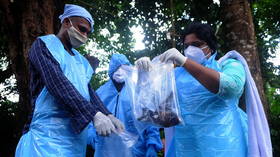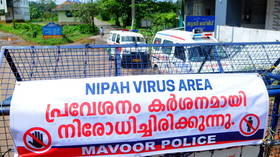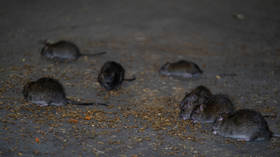The nightmare returns? A deadly new bat-borne virus is spreading through Asia
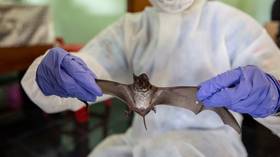
The southern Indian state of Kerala recently introduced emergency measures to combat an infectious respiratory disease transmitted by bats – although we’re not talking about Covid-19, but rather the Nipah virus. It was the fourth such outbreak in Kerala since 2018. On this occasion, the state contained the virus within days and limited the fatalities to two, demonstrating why it has one of the best healthcare systems in India.
The Nipah virus (NiV) infection, also called the Nipah virus encephalitis, is named after the Malaysian village of Kampung Sungai Nipah, where it was first found. It is a zoonotic disease that spreads from animals to humans. An outbreak of the virus in Malaysia in 1998 and 1999 started from infected pigs and resulted in 265 cases and 108 deaths. (According to a Kerala health department source, the pig is an intermediary host, transmitting the virus from bat to human.) The strain then spread to Singapore in 1999, leading to 11 infections and one death.
In Bangladesh, the virus has infected 237 people since 2001; 150 deaths were recorded prior to 2011, before cases gradually dropped to zero in 2016. This year, Bangladesh has recorded 11 infections, resulting in eight deaths. In India, the first Nipah outbreak was reported in the city of Siliguri in West Bengal in 2001, where there were 66 cases and 45 deaths.
The first case in Kerala was reported from the city of Kozhikode in the northern part of the state in May 2018. During that outbreak, 21 deaths were registered. Kerala likewise battled outbreaks in Kozhikode in 2019 and Ernakulam in 2021, before new cases appeared this year in Kozhikode.
How the virus broke free
In Kerala, Nipah is postulated to spread through the consumption of fruit that has been infected by bats. Fruit bats belong to the Pteropodidae family, and survive largely on a diet of fruit which they locate with their sense of smell or by finding the source of the echoes of their own sound.
“Their habit is to fly in long ranges in search of fruit,” C Abdul Latheef, divisional forest officer at Kerala’s Forest and Wildlife Department in Kozhikode, told RT. “They even fly in a 30km radius in a single day in search of fruit.”
Dr M Muraleedharan, national convener of the Indian Medical Association’s Antimicrobial Resistance Committee, said bats carry around 4,000 viruses, including Nipah.
“The virus will live in the body of bats, while it is fatal for other animals,” he told RT. “(Nipah) is not present in all bats, but in 3% of them. The virus will multiply in the body of each of the 3% and will then spread to others.
“The virus multiplies because of factors like scarcity of food and drinking water; when bats get scared; climate change; and due to pregnancy in female bats. The connection to climate change is an assumption that has to be studied,” he added.
One place the infected bats might have visited during the latest outbreak is farmland owned by one of its victims.
Suffering from severe fever, headache, and fatigue, the 40-year-old M Haris staggered towards the home of Dr P Jyothikumar, a general practitioner in Vadakara, located in Kerala’s Kozhikode district, on September 11. The symptoms did not subside despite treatment at a private clinic and at a Primary Health Centre. Haris, of Ayancheri near Vadakara in Kozhikode, died that day at the Aster Malabar Institute of Medical Sciences (MIMS), a private hospital.
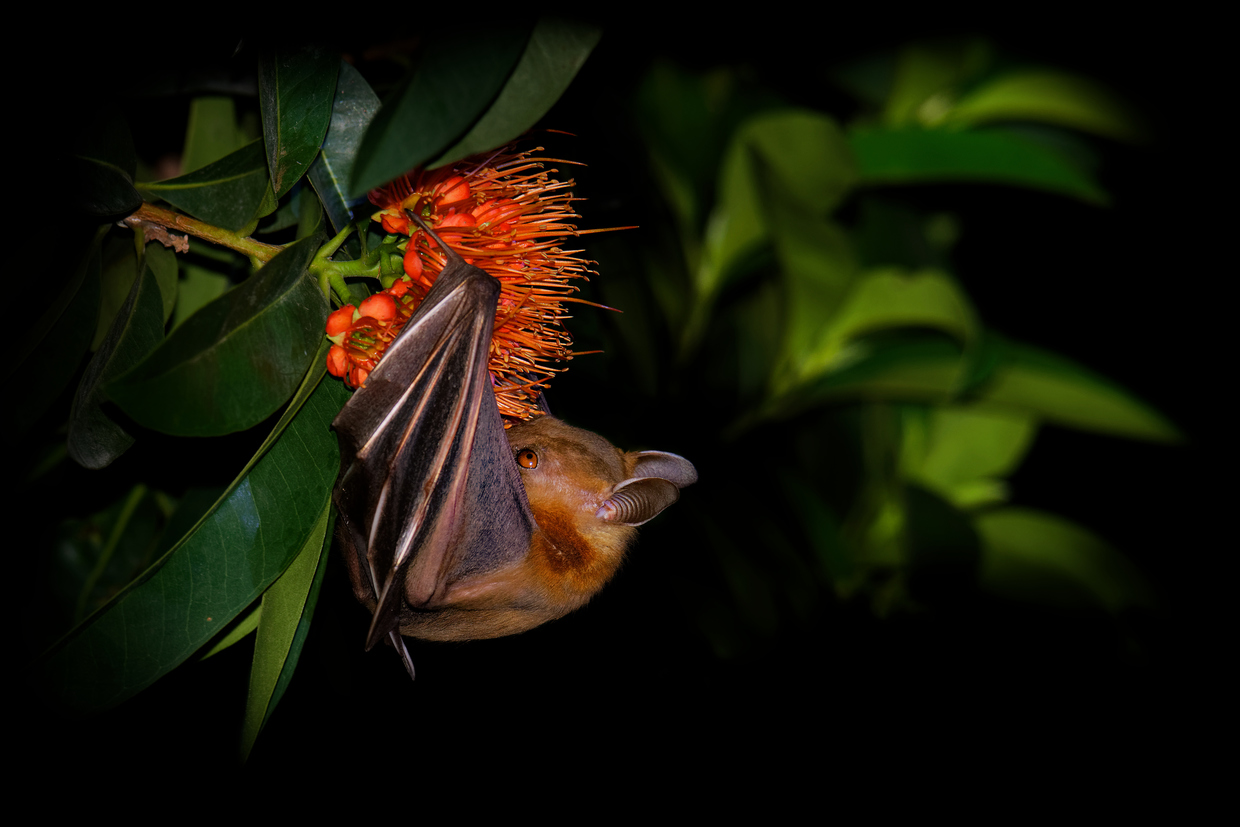
A different patient, E Mohamedali, a 47-year-old from Maruthonkara near Kuttiadi in Kozhikode, also died. The cause was initially presumed to be pneumonia. However, Mohamedali’s two children, their uncle, and a cousin were brought to Aster MIMS on September 10 with fever, a cough, and breathing difficulties.
A team of doctors contacted the hospital where Mohamedali had died, and it emerged that he had been a caregiver at the same facility where Haris had been admitted. Both had died of the Nipah virus, Union Health Minister Mansukh Mandaviya confirmed. Local authorities also discovered that a large number of bats had been spotted on Mohamedali’s farmland.
The Nipah outbreak was the fourth in Kerala, and even though the virus has been contained with two deaths and six infected, the local health department on Tuesday announced it would continue restrictions in the containment zones in Kozhikode.
How doctors established it was Nipah
Speaking to RT, Dr Jyothikumar of the Cooperative Hospital at Vadakara recalled that Haris had tested negative for other viral infections, which led to the suspicion that “he was dealing with an unusual virus.”
“The patient’s symptoms did not subside despite preliminary treatment,” Dr Jyothikumar said. “White blood cells and platelets were low, as in dengue, but he tested negative for dengue. Leptospirosis (rat fever) was also suspected. But he tested negative for rat fever too.”
Haris’s blood sample was sent for an ELISA (enzyme-linked immunosorbent assay) – a test that detects certain antibodies, antigens, and other substances in blood, urine, or other bodily fluid – because the rat fever test can show false negatives. Five hours later, there was another negative result.
“Another possibility was viral hepatitis, the test for which was done at the hospital itself. This was also negative. An X-ray for viral pneumonia was done, but revealed no features of the disease. I then suspected an unusual disease. We send emergency cases to either the Medical College (Government Medical College, Kozhikode) or to Aster MIMS. Haris preferred a private hospital and hence shifted to MIMS,” Dr Jyothikumar added.
He immediately called Dr Anoop Kumar, a critical care specialist at Aster MIMS who played a key role in detecting Nipah in 2018, only to hear that patients with similar symptoms had tested negative for other viral infections. The doctors raised a red flag.
The government contains the spread
Kerala Chief Minister Pinarayi Vijayan told the media on Tuesday that the entire health infrastructure in the state had been involved in containing Nipah.
“A Nipah action plan has been prepared and a core committee has been formed with 19 teams. Health experts opined that the chance for a second wave is remote, though that can’t be completely written off. In the virus sequencing (that can contribute to the tracking of epidemics) done by ICMR (Indian Council for Medical Research) similar things (about the outbreak) were found about 2018 and 2019,” Vijayan said.
State Health Minister Veena George coordinated the Nipah containment after the government was informed about the suspected case on September 11.
“An unusual fever death happened... the patient had comorbidities. But Nipah was suspected as his close relatives had symptoms. The patient’s blood sample was tested at the Kozhikode Medical College the same day, which was positive. But the authority to declare a Nipah outbreak is the National Institute of Virology (NIV), Pune, in Maharashtra. Samples were sent to the NIV and Nipah was confirmed,” she said.
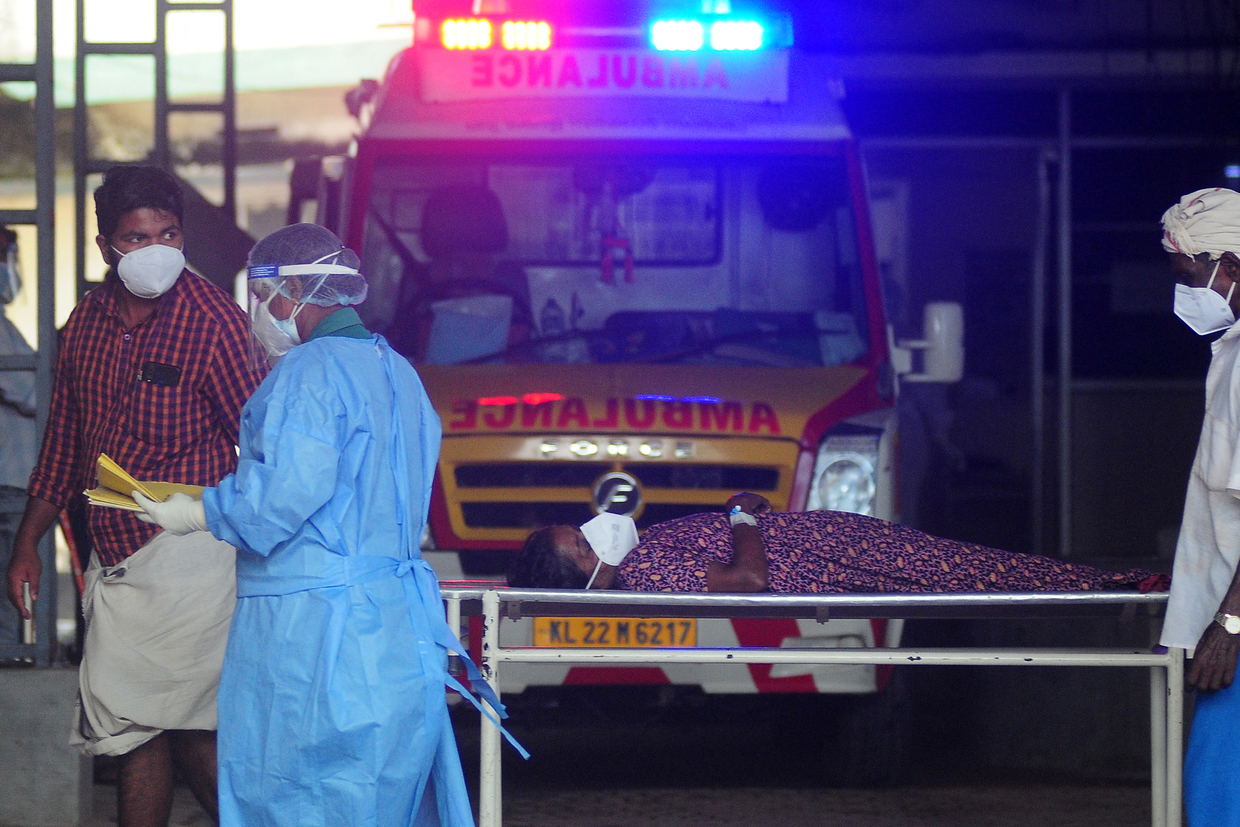
The Health Department began field surveillance in the region, and according to the minister thousands of samples were tested at Kozhikode Medical College Hospital.
“A diagnosing network has been established with NIV Pune, and a state-level workshop was conducted with health experts and the participation of the Forest and Animal Husbandry department,” George said.
The Union government sent three teams: one for bat surveillance, the second a mobile testing unit to avoid any delay in sending the samples to NIV Pune, and the third for epidemiological assessment.
Containment zones were declared in nine local bodies, several divisions of the Kozhikode Corporation, and in various wards of the Feroke Municipality in the same district. Asha (Accredited Social Health Activist) members visited homes daily to monitor people and collect data. Intensive contact tracing of patients was based on their route maps.
The state had deployed similar methods for Covid-19 management. Movement in the containment zones was restricted and was allowed only for emergencies. Only shops selling essentials were permitted to open, while educational institutions and banks remained closed until the restrictions were lifted.
How Kerala is dealing with the Nipah virus
Kerala had already had practice. From the second outbreak onwards, the state reduced the Nipah mortality rate. In 2019, the infection was detected in a 23-year-old man in Ernakulam, who survived. The 2021 outbreak, however, claimed the life of a 12-year-old boy. Kerala’s contact tracing and strict surveillance of people on the patient’s contact list have resulted in the effective containment of the disease.
Such strict surveillance does not exist in many other states, where it might have gone undetected. Kerala invests heavily in the public health sector, resulting in the effective management of disease outbreaks. The state has a multi-level hospital system under the government, starting from the Primary Health Centre to the Community Health Centre, and from Taluk (an administrative unit of a number of villages) to District Hospitals. The state has medical colleges in 12 of 14 districts.
Kerala has generally been a good health service provider. Along with two other southern states, Tamil Nadu and Telangana, it emerged as among the top performers in the NITI Aayog’s annual health index during the Covid pandemic. NITI Aayog is the apex policy think tank of the Indian government. Its annual health index measures the performance of states and Union Territories (UTs).
Kerala also emerged top among the larger states in the country for overall performance on health indicators in the NITI Aayog report in 2019. In addition, the state has the lowest infant mortality rate in the country.
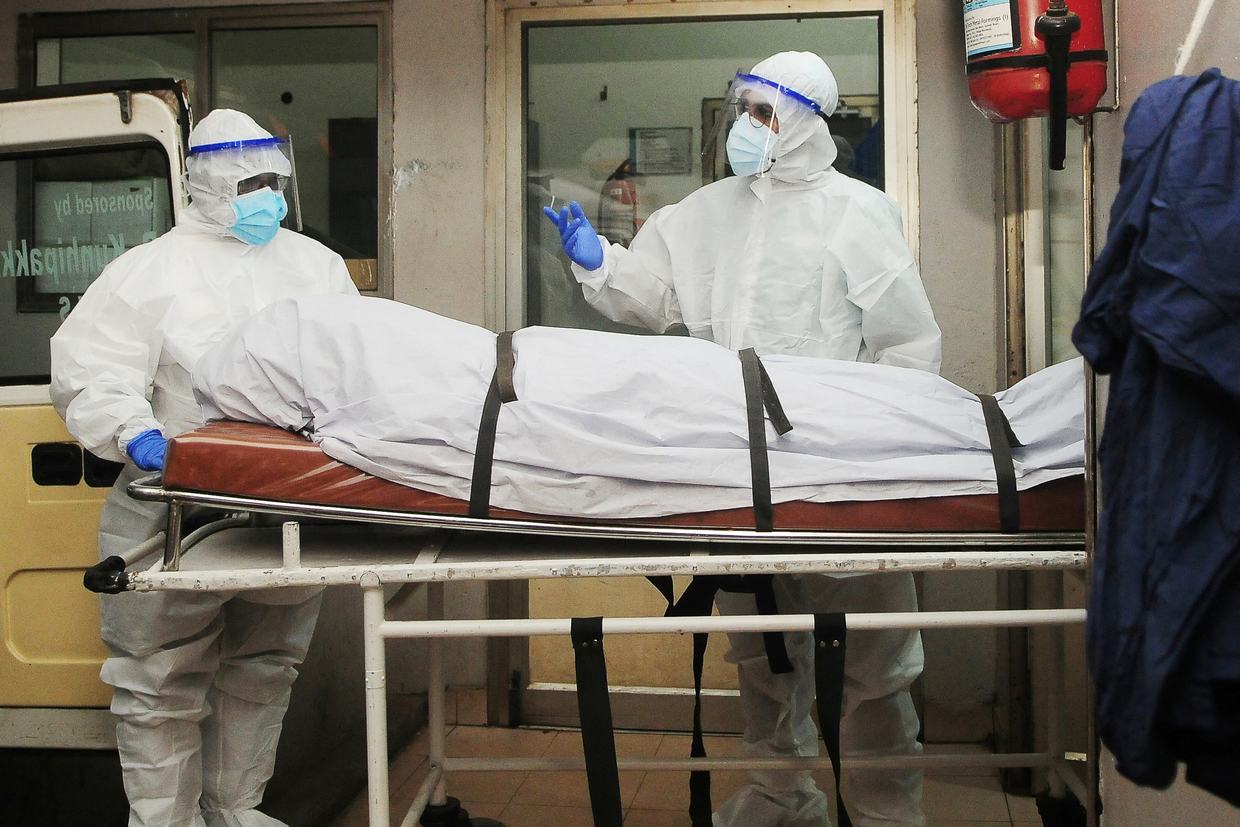
For the Nipah confirmation test there are two virology labs in Kerala – at Kozhikode Medical College Hospital and at the Institute of Virology at Thonnakkal, in Thiruvananthapuram. The Medical College has boasted a BSL-2 (Biosafety level 2 that covers all laboratories that work with agents associated with human diseases) facility since September 2021.
Additionally, a team of medical experts prepared a Nipah protocol for the state after the 2018 outbreak and revised it in 2021.
Why Kozhikode?
Dr Muraleedharan said that a scarcity of water and food forces animals out of the forest, a high occurrence in the northern Kerala districts of Kozhikode and Wayanad. This, in turn, could increase the presence of bats.
“We see bats as bad omens and will scare them off and that triggers the virus in their bodies,” he said.
But there appears to be precious little that can be done. “Bats fly high,” Latheef added. “It is naturally not possible to constrain their movement.” In his opinion, the only option is to remain vigilant when bats focus on a particular region for fruit. “It is not practical to constrain the natural movement of an animal.”
Sreehari Raman, assistant professor at the Wildlife Science Department of Kerala Agricultural University, told RT that “it is not like restricting the entry of wild elephants to the city by constructing fences.”
“Bats move in the direction of fruit. When its availability is reduced, they move on. They can fly on an average of 20-25km a day. But of the 48 to 50 species of bats in Kerala, only six are fruit-eating. The rest eat insects and are not suspects in spreading the Nipah virus.”
How have other countries dealt with Nipah?
In 1999, Malaysia resorted to a large-scale culling of pigs after the mortality rate from infection diseases surpassed 60. Indonesia in 2020 culled hundreds of bats found in a local market, describing it as a bid to curb the spread of the Nipah virus.
Kerala, on the contrary, has never resorted to similar measures, and in 2018 the government warned against culling bats.
“The warning against disturbing bats was given this year as well,” a state health department source told RT on condition of anonymity. “It will only scare them and lead to ‘virus excretion’. The state strategy is to prevent transmission through contact tracing. The state only culls commercially grown animals, not natural animals.”
How, then, did Bangladesh nearly eradicate infections? It conducted a mass awareness campaign, asking people not to eat date palm sap (DPS). Indians, however, are skeptical of this claim. “It’s not an established fact that in Bangladesh, the virus was transmitted by consumption of raw DPS,” Dr Anish TS, associate professor of community medicine at the Government Medical College in Malappuram, told RT.
Chief Minister Pinarayi told the media on Tuesday that even the ICMR has not given a clear answer on why Nipah is recurring in Kozhikode.
“Scientific precautions have been taken to prevent the spread of Nipah in Kozhikode and the nearby Kannur, Wayanad, and Malappuram districts,” he said. “The state will conduct a sero-surveillance study and the Health Department will submit a detailed proposal."
